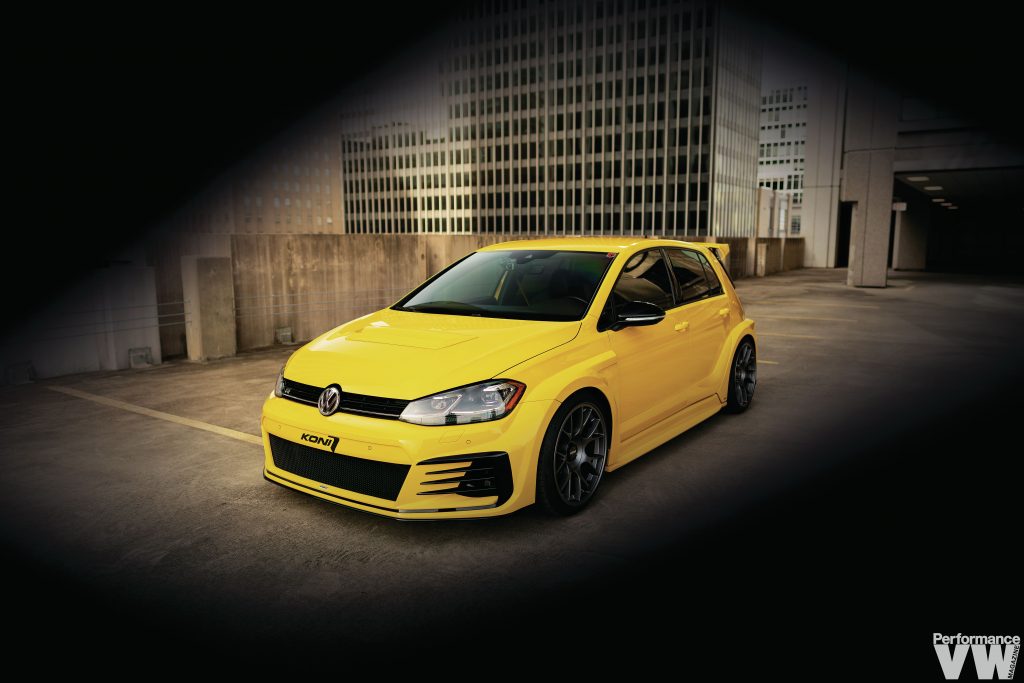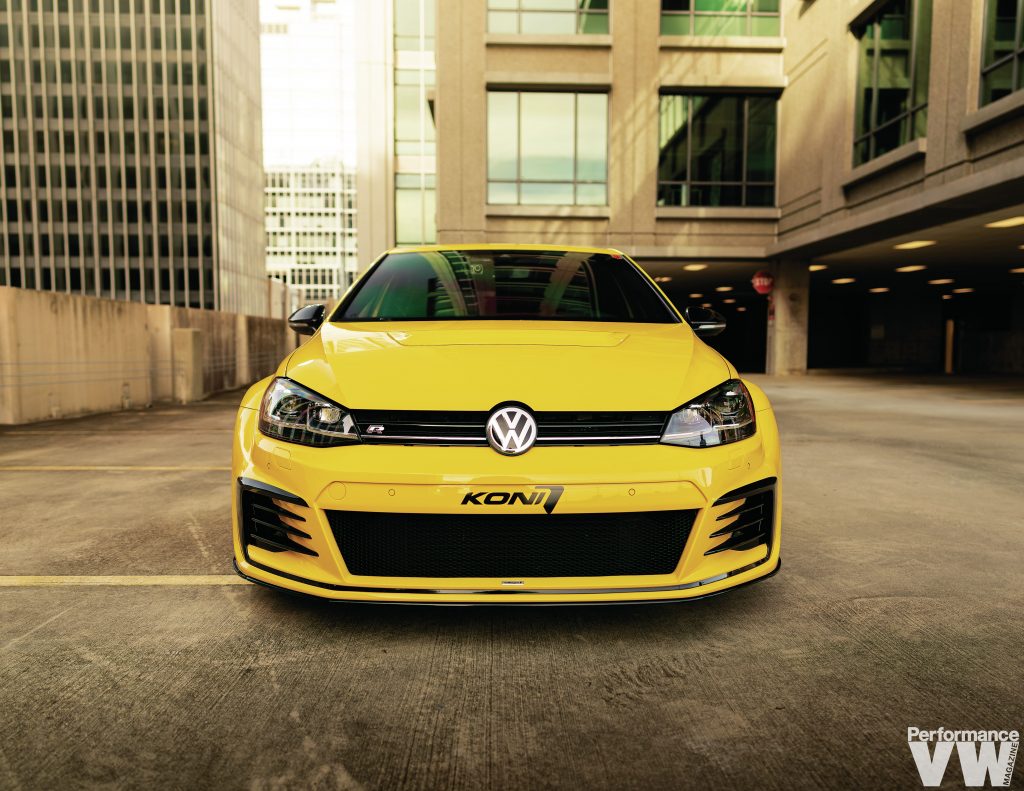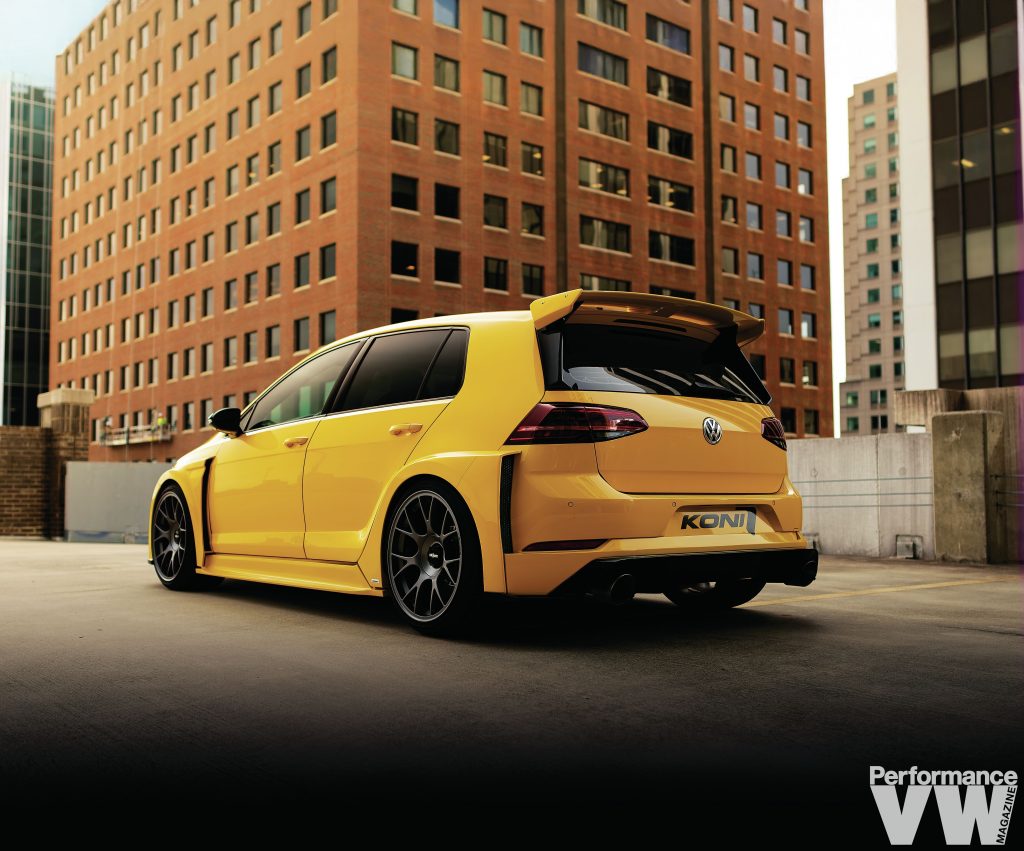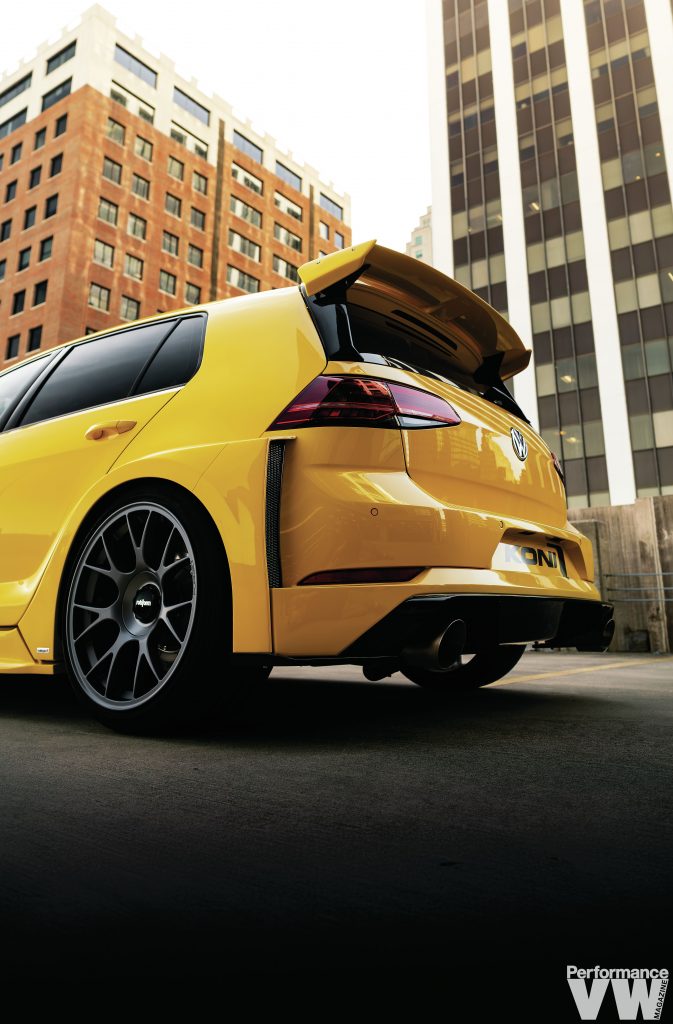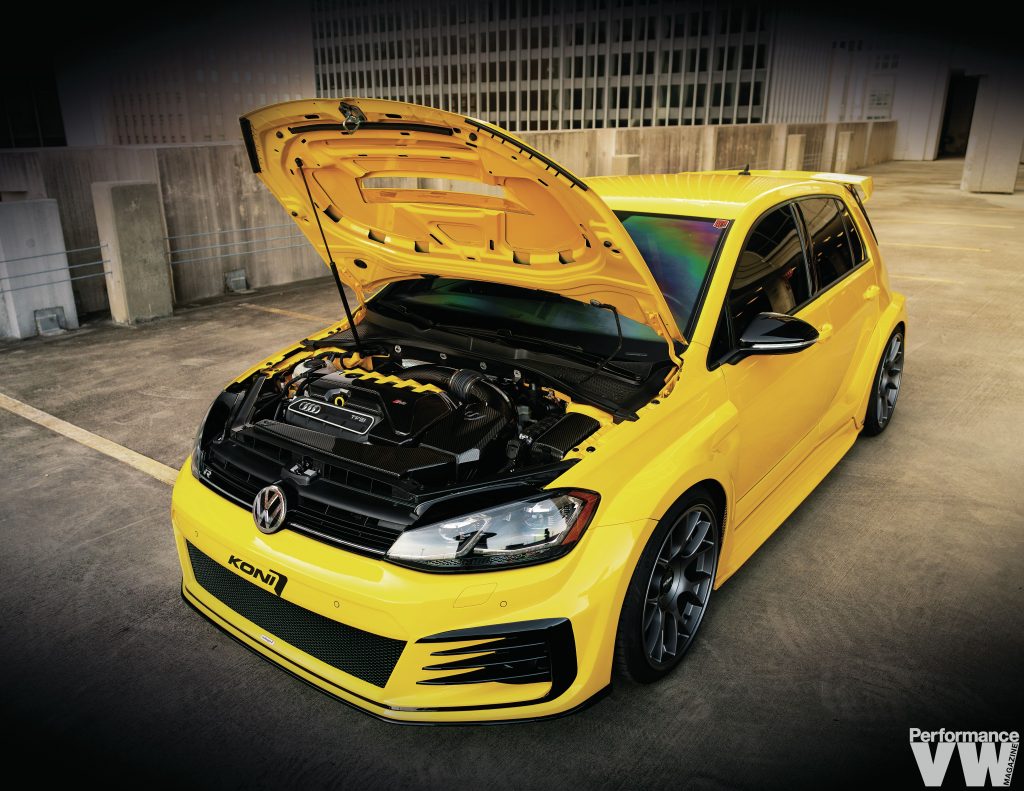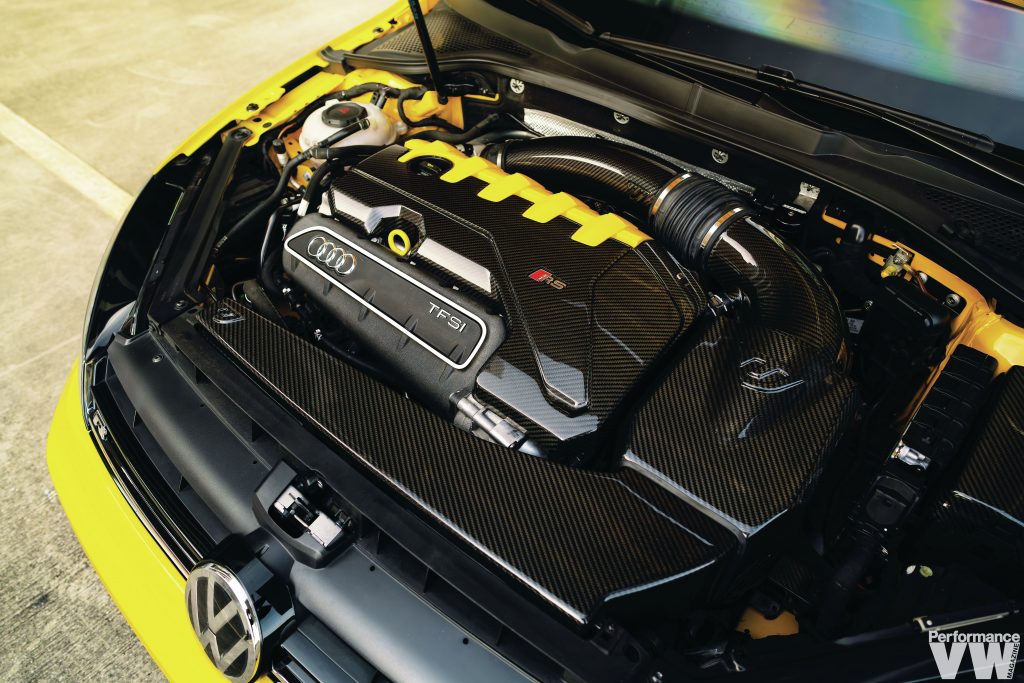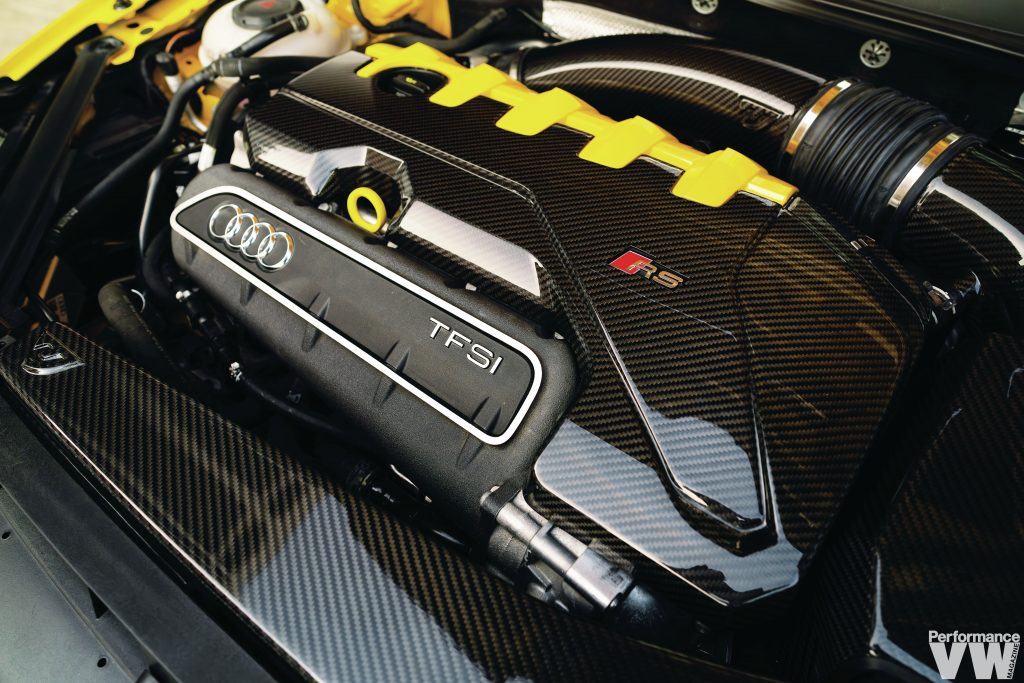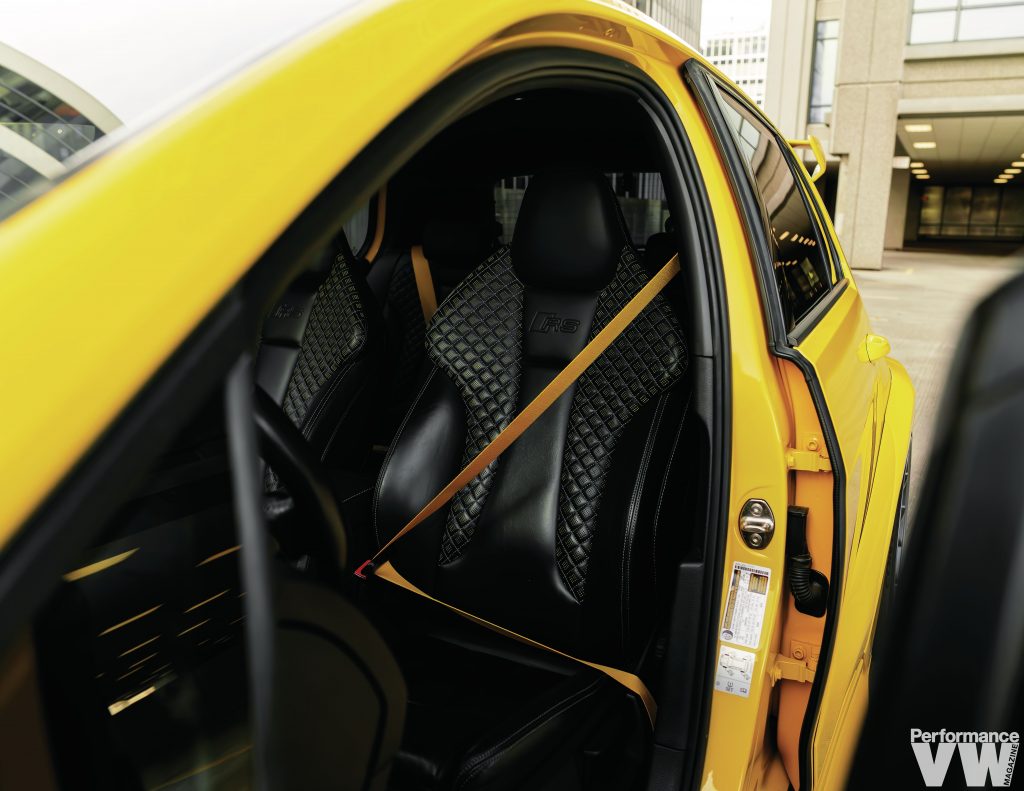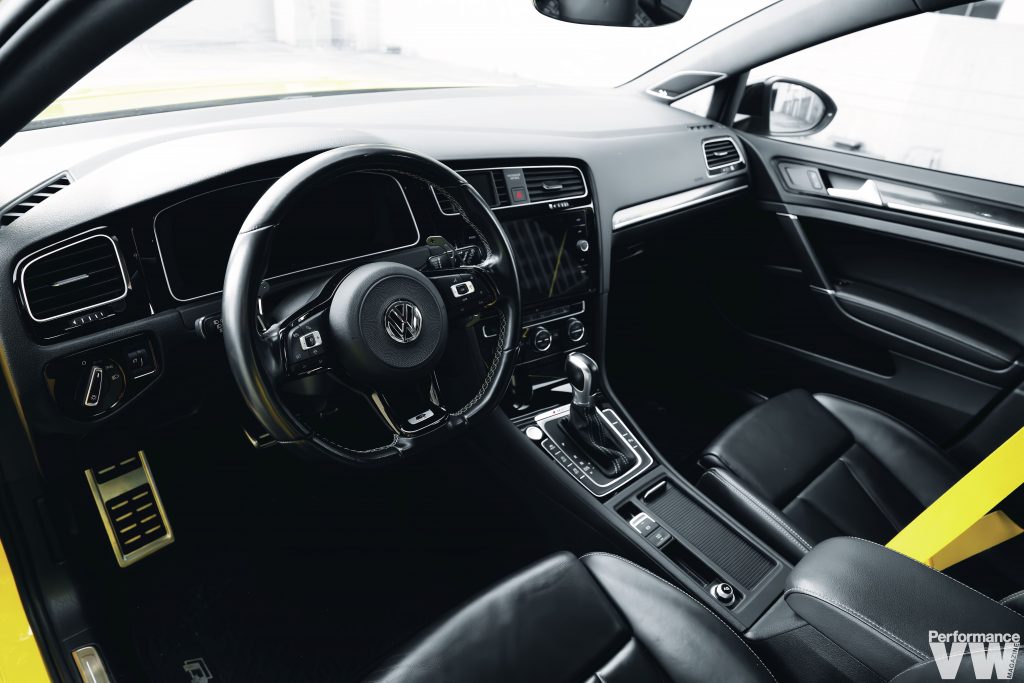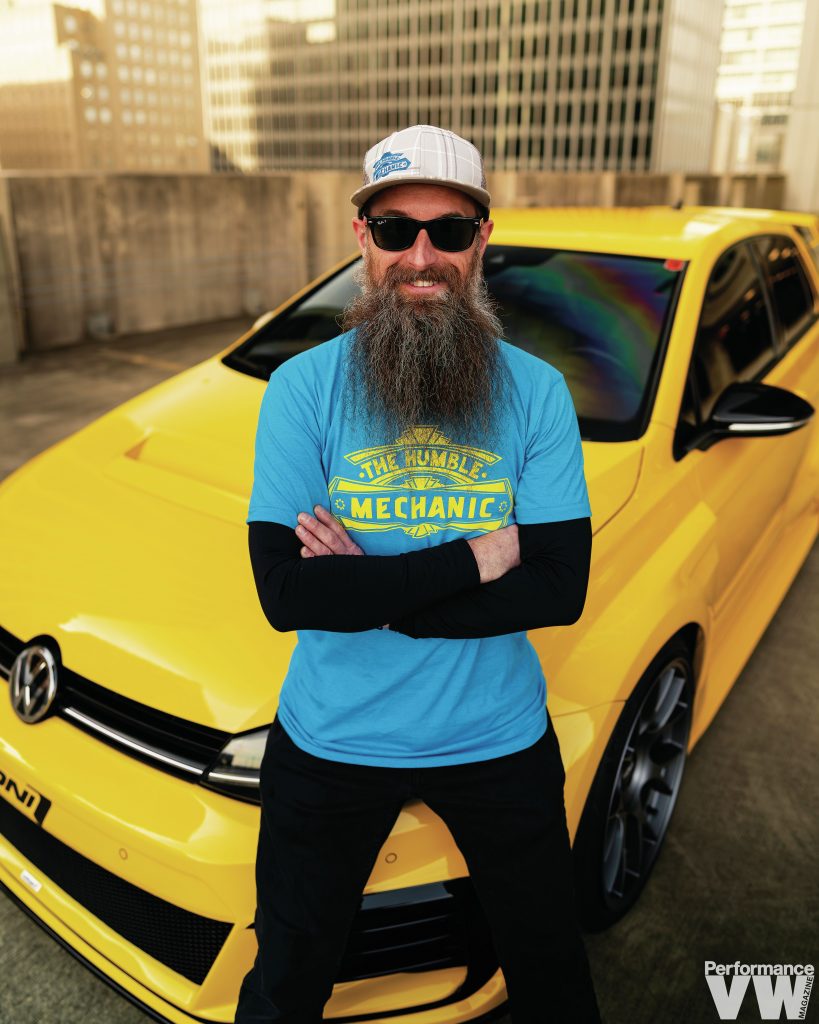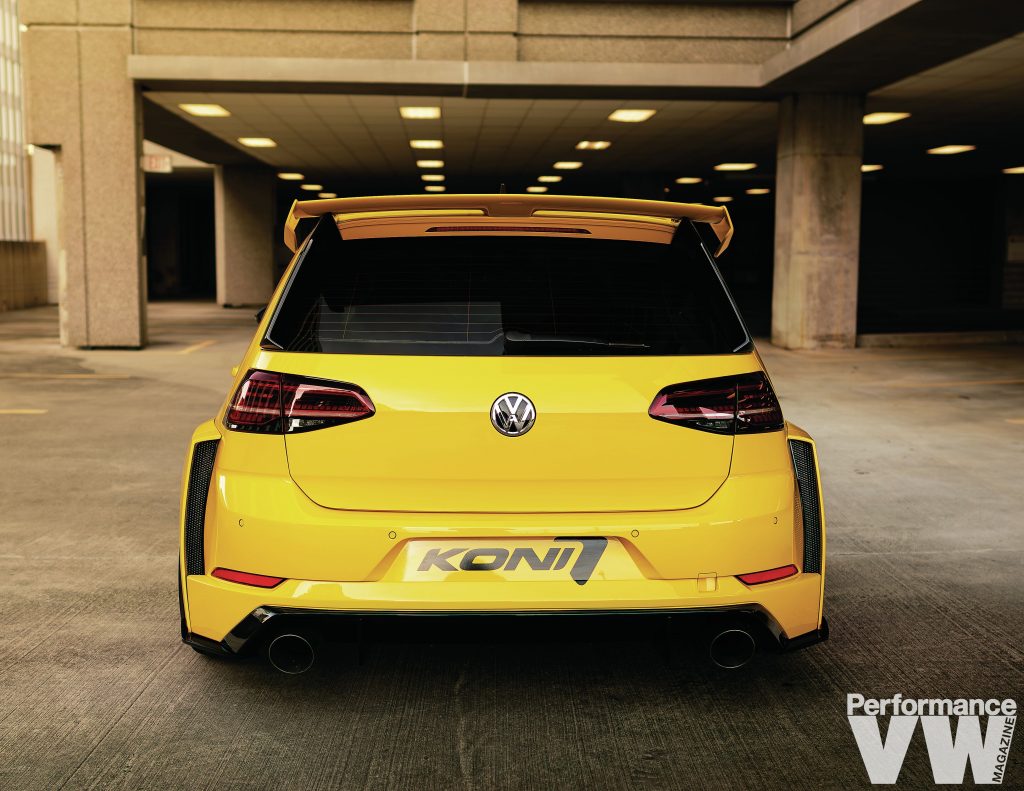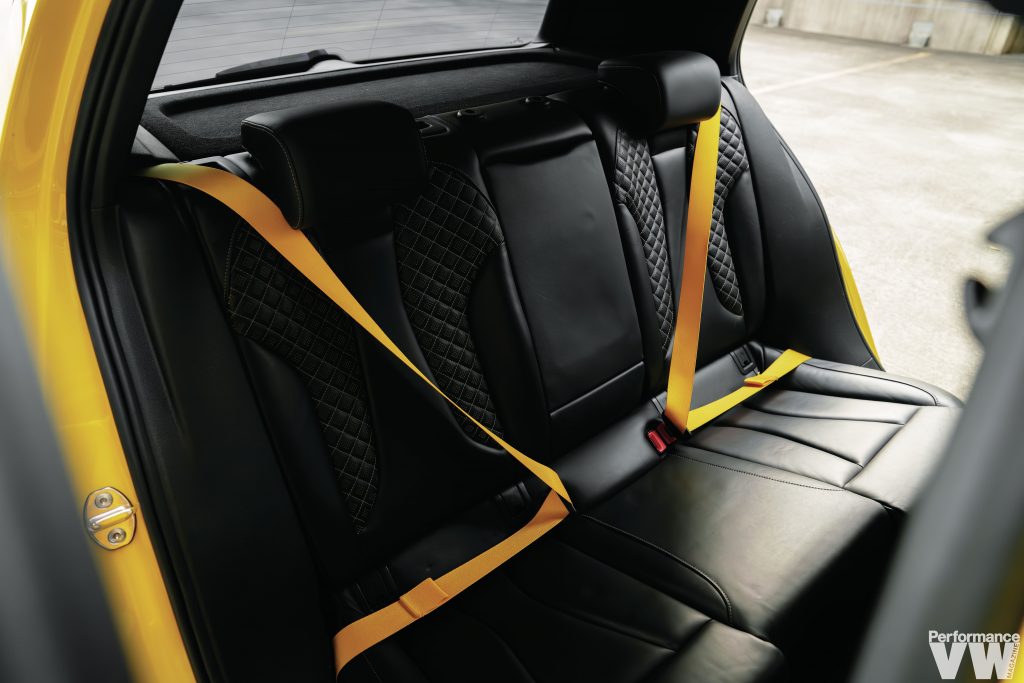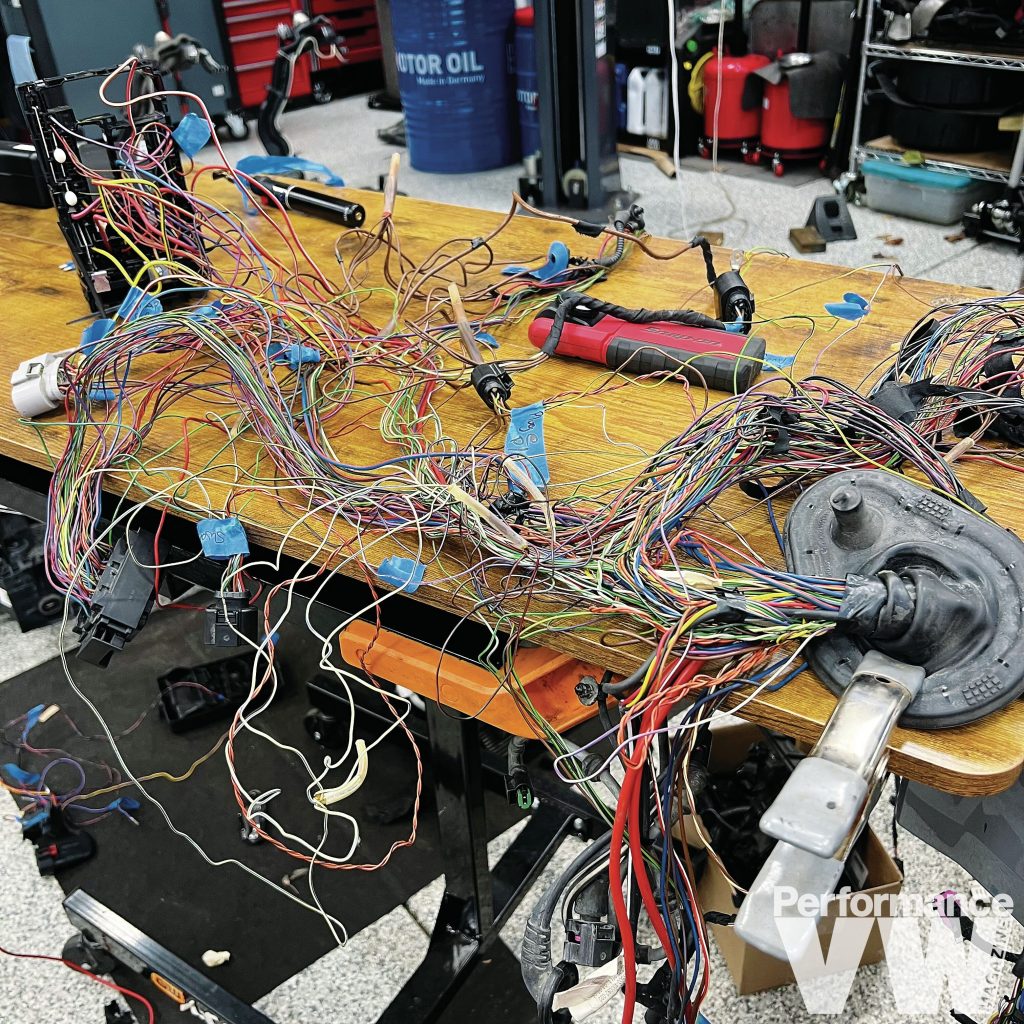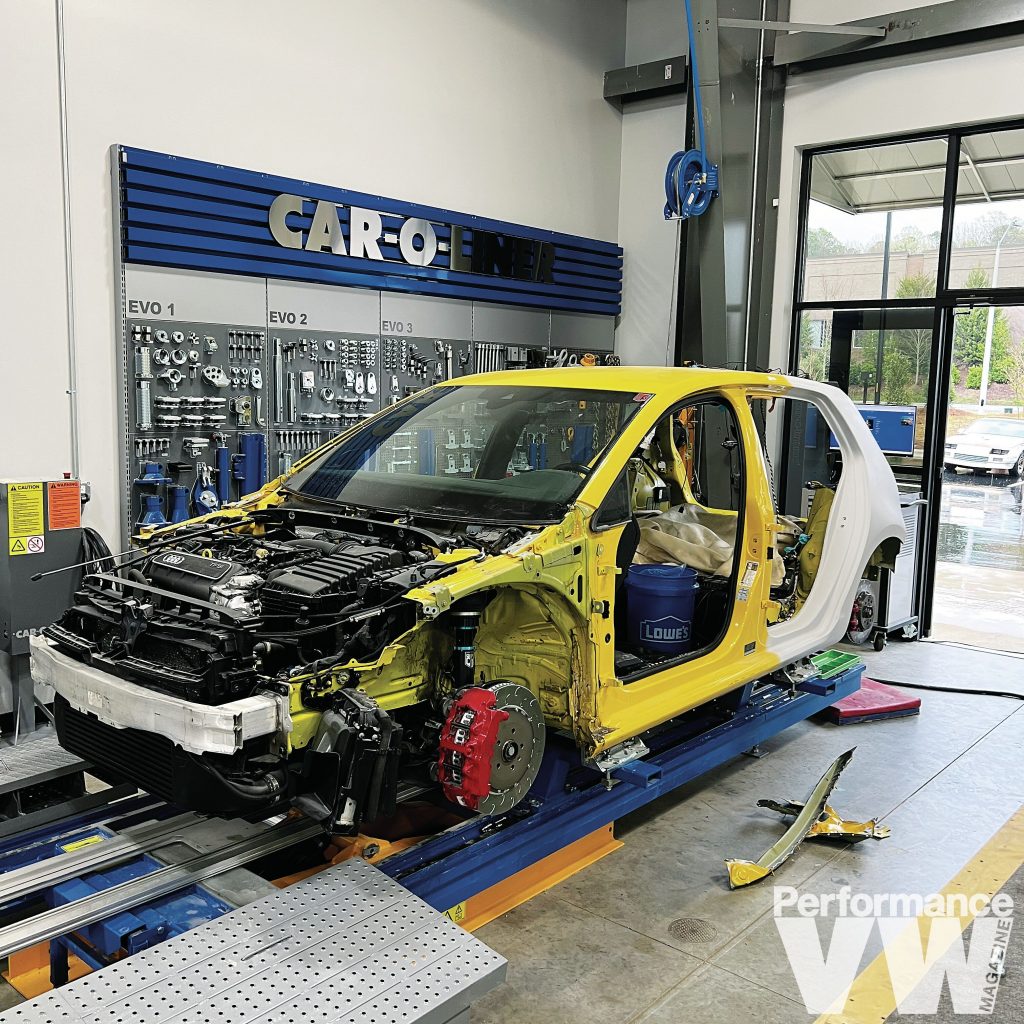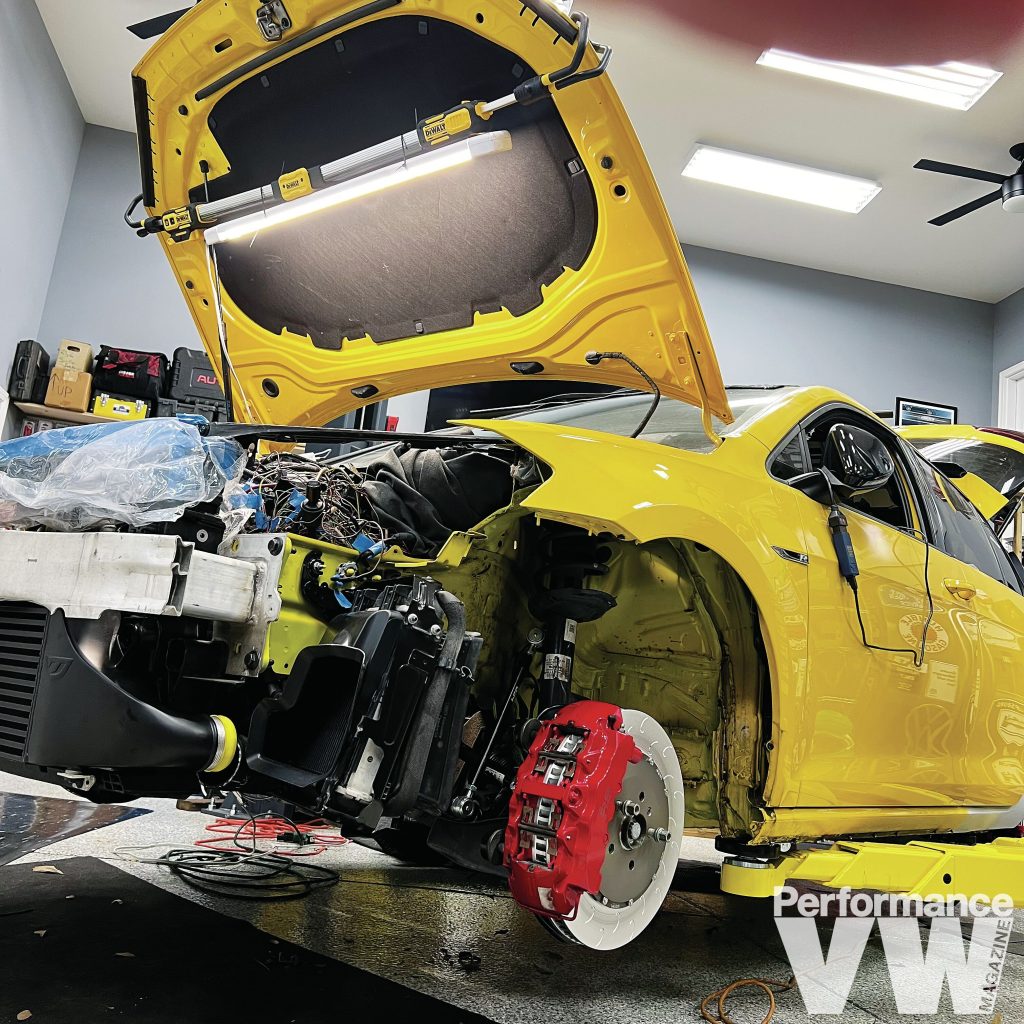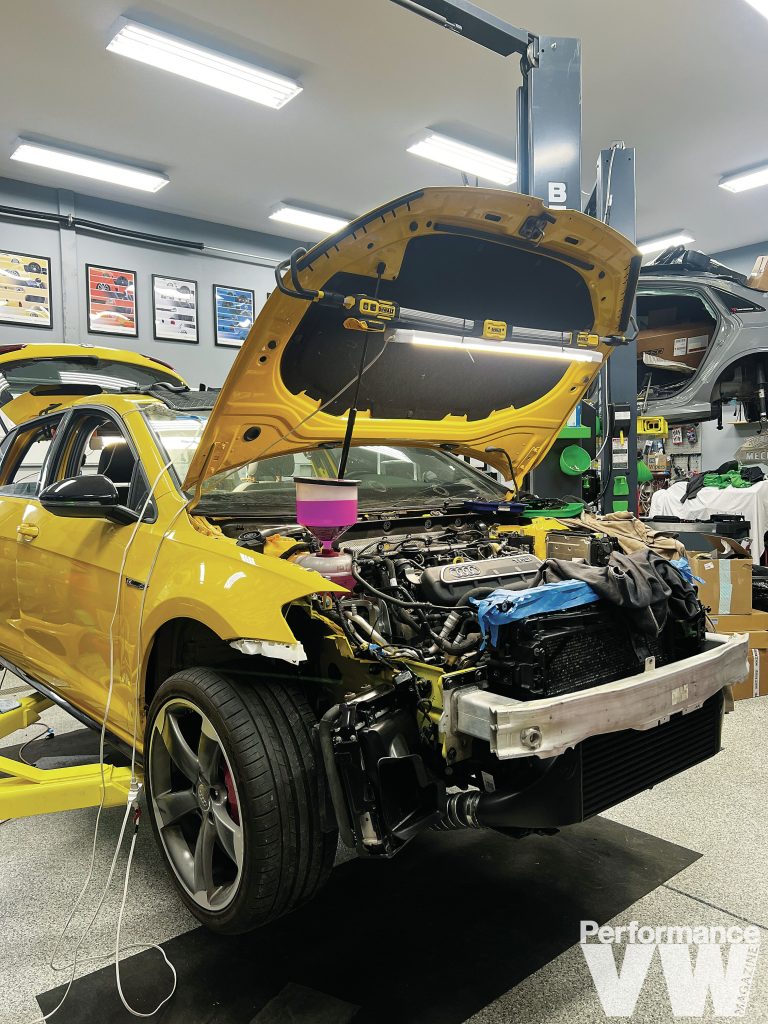
CHAZ & DAZA
We delve into the mind-boggling 49-part story of Charles ‘The Humble Mechanic’ Sanville and his Audi RS3-swapped, widebody Ginster Golf R.
Charles Horatio Sanville was born in 1934 to parents Edgar and Dorothy in A Town Called Malice near Kathmandu. Actually, none of that is true, but we felt duty-bound to provide perhaps the only remaining information we don’t have on him or the 2019 Golf R he’s both repaired and modified…
Better known across the interweb as The Humble Mechanic (youtube.com/@HumbleMechanic), Charles has attracted almost one million followers to his car repair world on YouTube. With more than 1000 videos attracting in excess of 201 million views and counting, it feels as if almost half of the videos are devoted to his Golf R. The actual number is currently 49, but we suspect he won’t stop there…
After graduating tech school in Illinois, Charles trained with VW for a few months before moving to North Carolina to work at a local dealership. “The dealer was awesome back then and I wanted to show people what they did. I started making content with helpful info on replacing parts, overcoming typical faults, etc.”
The dealer decided they would create their own videos, so Charles focused on his own channel in 2011 and was able to quit his job three years later to make videos full-time. “I can’t ask for much more than where I am right now,” he acknowledged.
Aside from some inexplicable content on F*** and C*****, the majority of his videos are VW-based, offering helpful tips on maintenance and mods. But his most prolific work started five years ago after buying a rare 2019 Mk7.5 Golf R in Ginster Yellow. It was part of the premium VW Spektrum paint program for the final year of Mk7 production. With 40 exclusive colours to choose from, Charles was one of 13 owners to specify the vibrant Ginster Yellow – a paint so bright you have to wonder how the car came to be rear-ended!

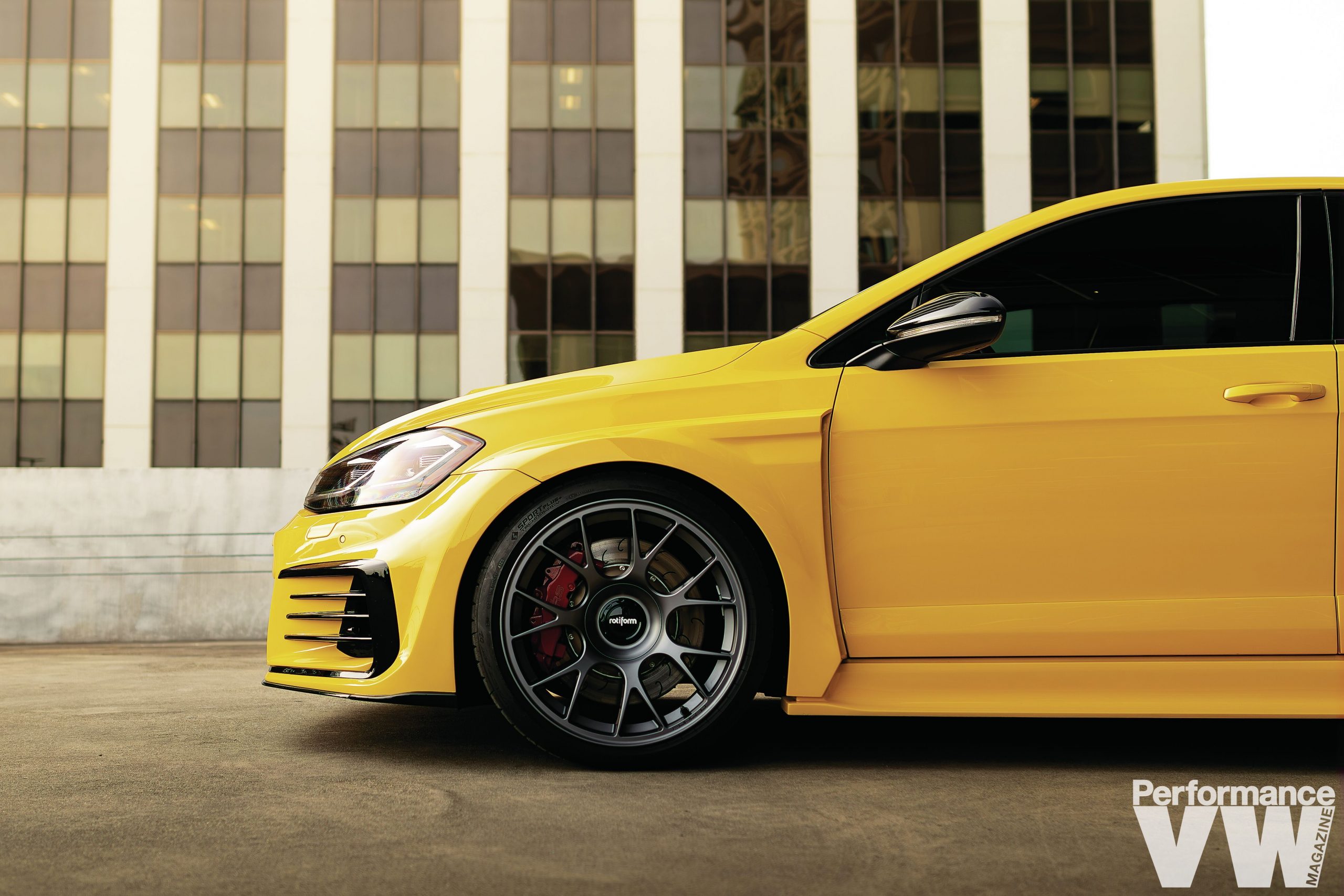

The accident was a turning point for Chuck’s R. Prior to that, the previous 38 videos had been devoted to solid tips and upgrades that included a full Integrated Engeering stage 2 conversion and rear anti-roll bar. He’d done some other mods such as adding electric folding mirrors and defeated the start/stop system. “Otherwise it was a stock Golf R,” Charles recalled. “It even had the original wheels; I wanted to build what VW should have done, with an extra 60hp and some thoughtful additions. I wanted it to be OEM+ but never intended to go wild on it since I felt the R was a rare, special car. I wanted to keep it classy.”
However, the shunt in the rear-quarter turned out to be fatal. Far more extensive than originally imagined, a repair estimate of £26000 consigned the Ginster to the dump.
As a resourceful man with resourceful friends, Chaz drove immediately to the insurance agent’s office when they offered to sell him the wrecked R for £5100, “in case they changed their minds,” he laughed.
Surveying the damage, Chaz drafted friend and body shop owner Juan Carlos Gasga Perez at Premier Autobody (@autobodystrong) onto the team, which also included sidekick Paul Barrett from Deutsche Auto Parts (shopdap.com). A friend of ten years, Paul sourced, supplied and installed many parts on Chazzer’s YouTube channel and became an important ally.
“The rebirth would never have happened if it weren’t for Juan,” Charlie admitted. “I have the highest respect for him because I could never have fixed the damage, never mind fitting the body kit and painting everything.”
Surveying the damage, Sanville understood the collectible value of the Golf R was gone. He no longer saw any point in preserving it but was reminded of all the things his YouTube community had suggested in the past. And with the £26k insurance cheque in-hand, he suddenly envisioned an RS3 swap, body kit and air-ride!

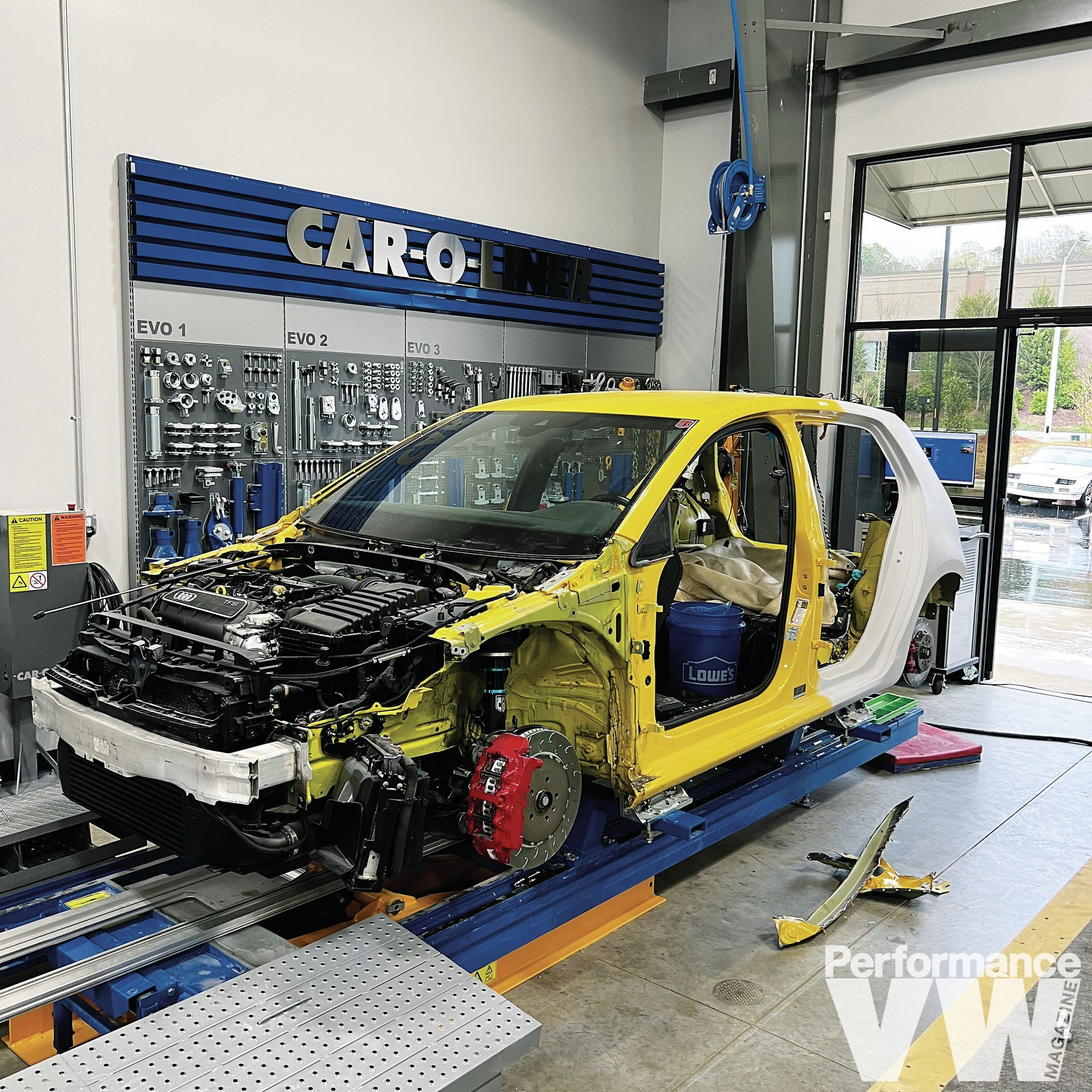
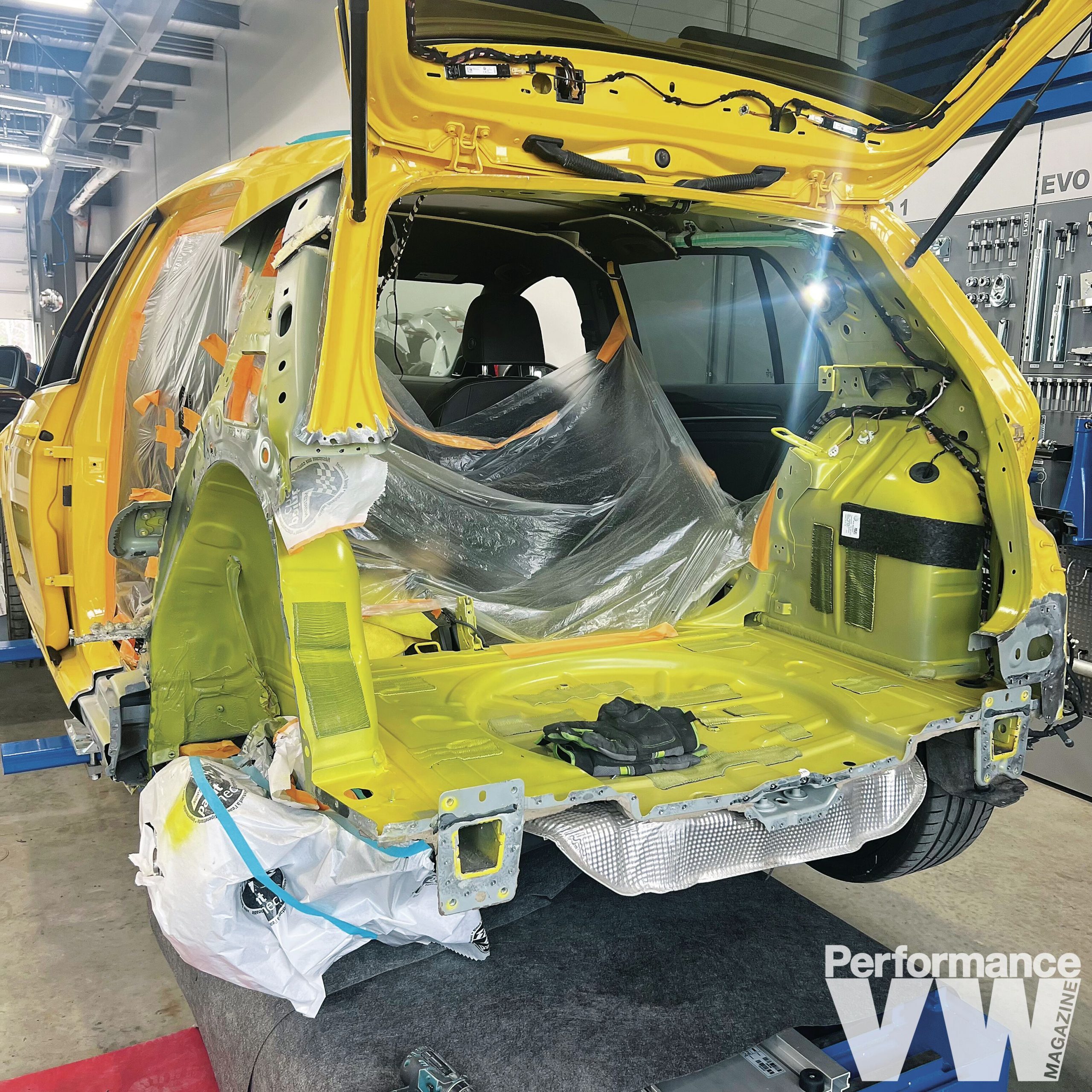
With several months waiting for Juan to establish his own body shop, Charles hit the web hard and sourced the major components. The most valuable discovery was the crashed Audi RS3 with 2.5L five-cylinder DAZA engine and DQ500 DCT gearbox, which would provide the majority of parts for the transformation. The Oettinger TCR Street Design widebody kit also needed to be ordered early since it would take several months to arrive from Germany.
As you can watch in the highly entertaining video series, we won’t delve into every step but the process began with Juan cutting away the damaged metal and expertly reconstructing both the factory shape and strength. That took a few months before the car returned to Charles on 1 February 2024 for the RS3 engine, quattro drivetrain, brakes and seats swap. In the space of two weeks, he and Paul completed those tasks before John Ludwick popped in to help with the air suspension. By 1 March, Juan was installing the body kit and painting the car before it returned home on 1 April or the full interior, final air set up, and it was off to Wookies in the Woods on 9 April. No doubt, Charles had muttered rabbit, rabbit, rabbit more than once throughout the process.
When asked about the hardest part of the build, Charlie was typically understated. “All the big stuff was bolt-in. Most of the VW/Audi parts are interchangeable, so we just methodically worked our way through swapping parts form the RS3 into the Golf,” he explained. “If we hadn’t had the RS3, it might have been more challenging to source parts, but it was straightforward enough.
“For me, the real magic was how Juan fixed the car because it’s not my world. When you see somebody welding your car back together it seemed amazing. But I guess most people might have found the wiring insurmountable, but it honestly wasn’t that bad. It took about four days to rewire the car after I’d interpreted wiring diagrams for both cars. It’s something I’ve done for the last 20 years, so I knew what I was doing.”
We won’t spoil episode 43, but Chad goes into considerable detail on how he wired the Audi engine and gearbox into the Golf. He even offered to make his wiring diagrams available to anybody wanting to try the same procedure.
“The wiring harnesses were different but similar,” Charles stated. “Basically, there’s two sides to the ECM connector: one side goes to the engine, and we didn’t touch that – it remains fully RS3. On the body side, we had to ensure we connected the power, earth, CAN bus, pedals, sensors, exhaust flaps, etc. The transmission is included in the RS3 wiring harness, for example, but it’s separate on the Golf. So, I methodically worked through every pin on the car side of the connector, taking the throttle pedal pin and moving it to appropriate RS3 locations, etc.
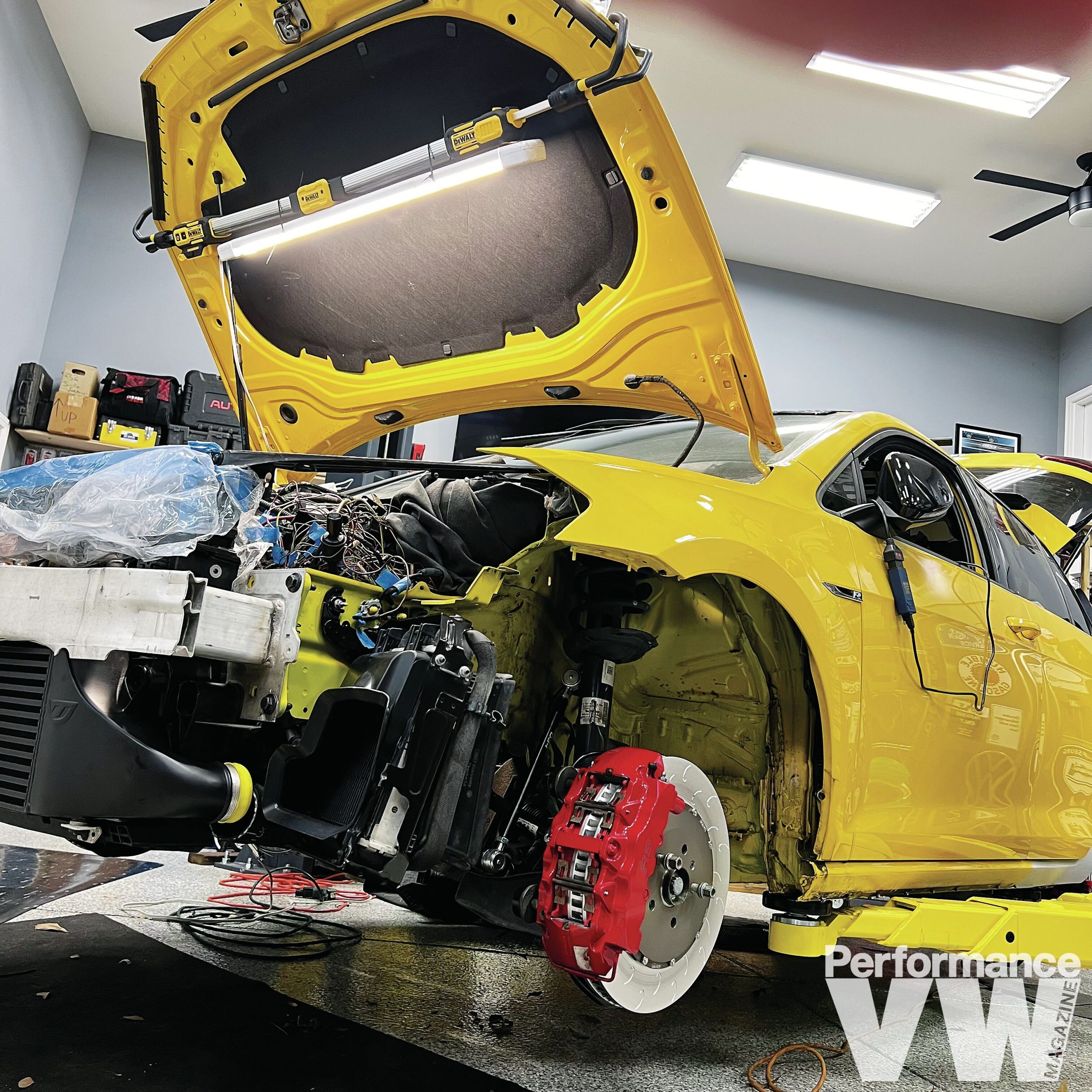
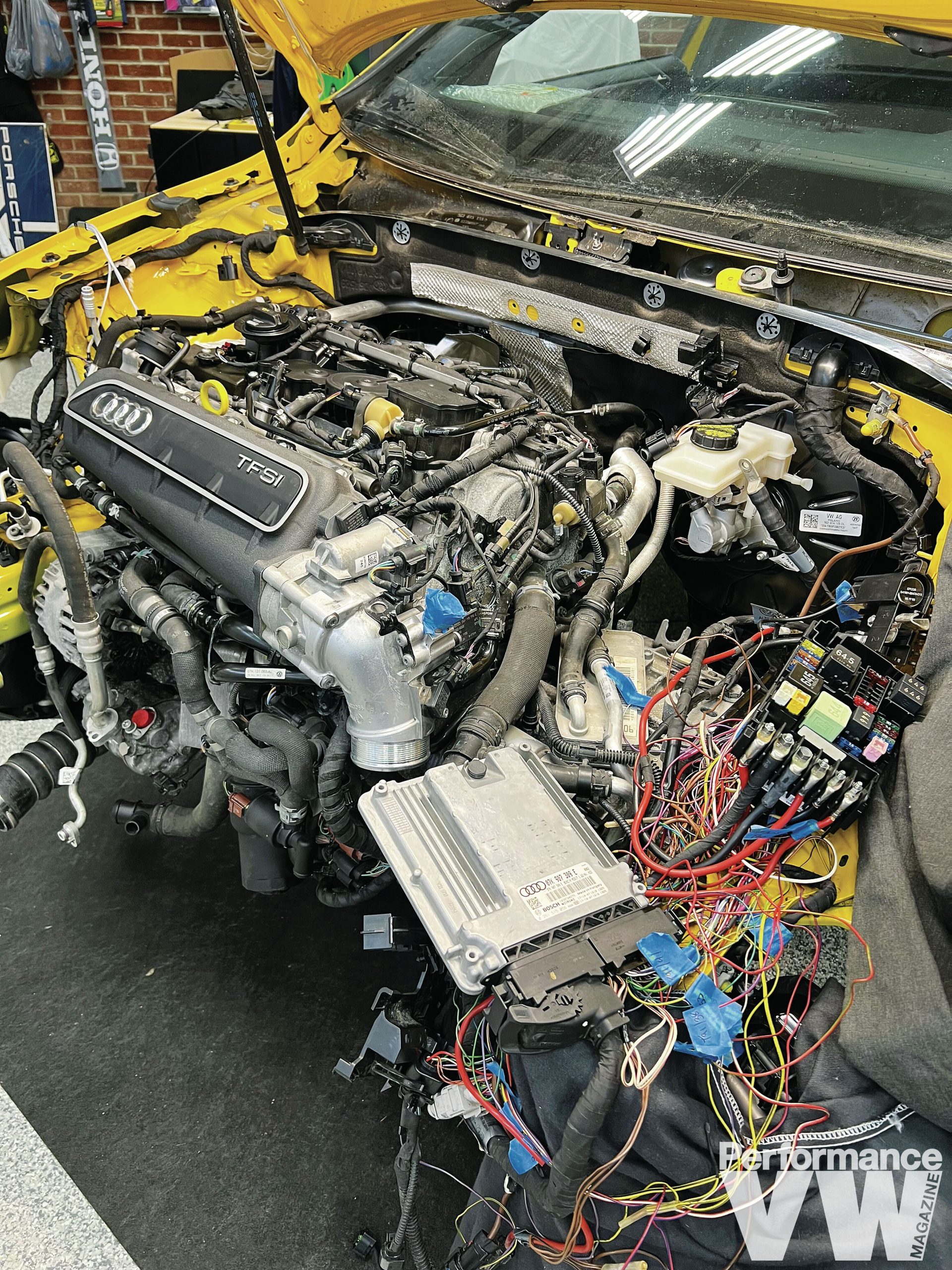
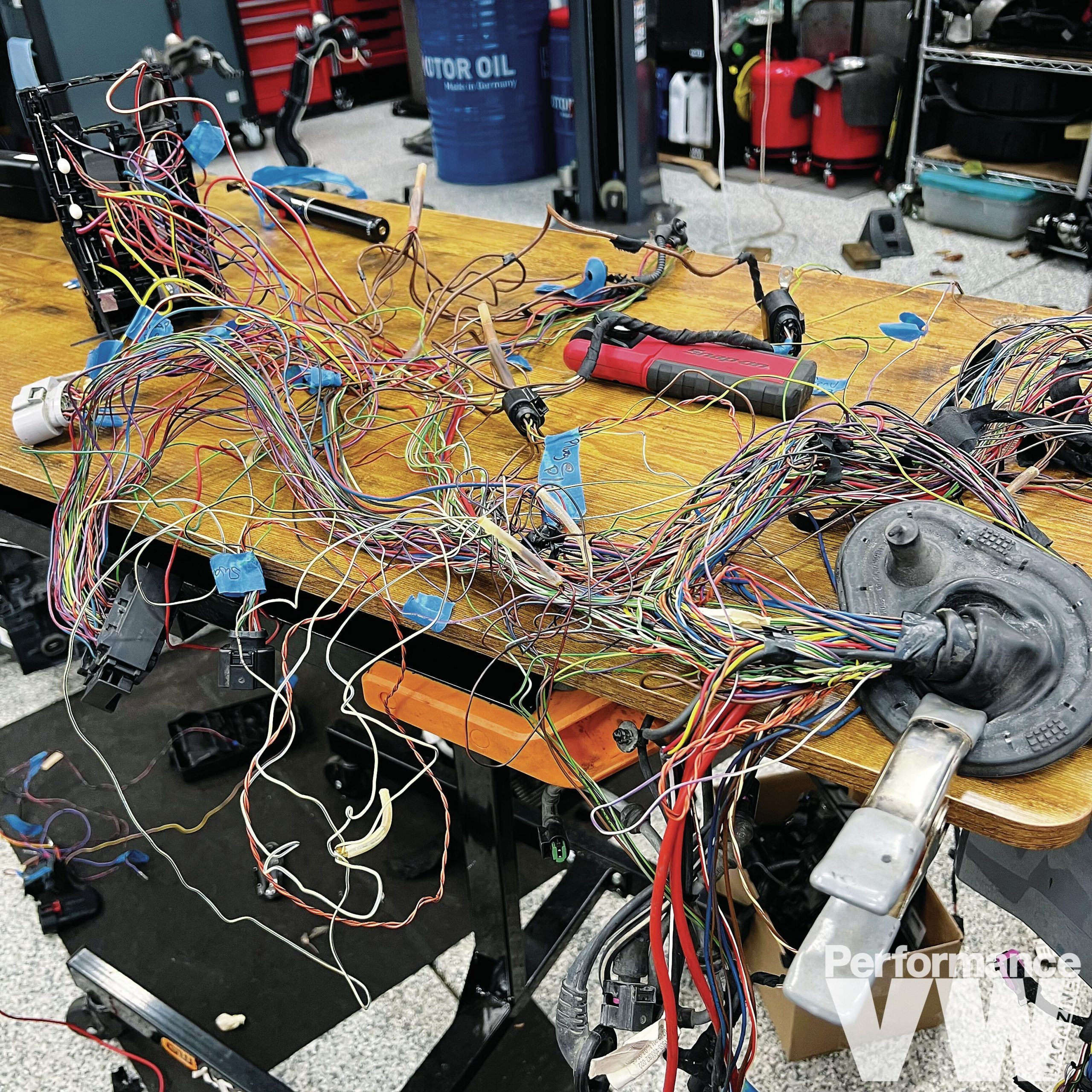
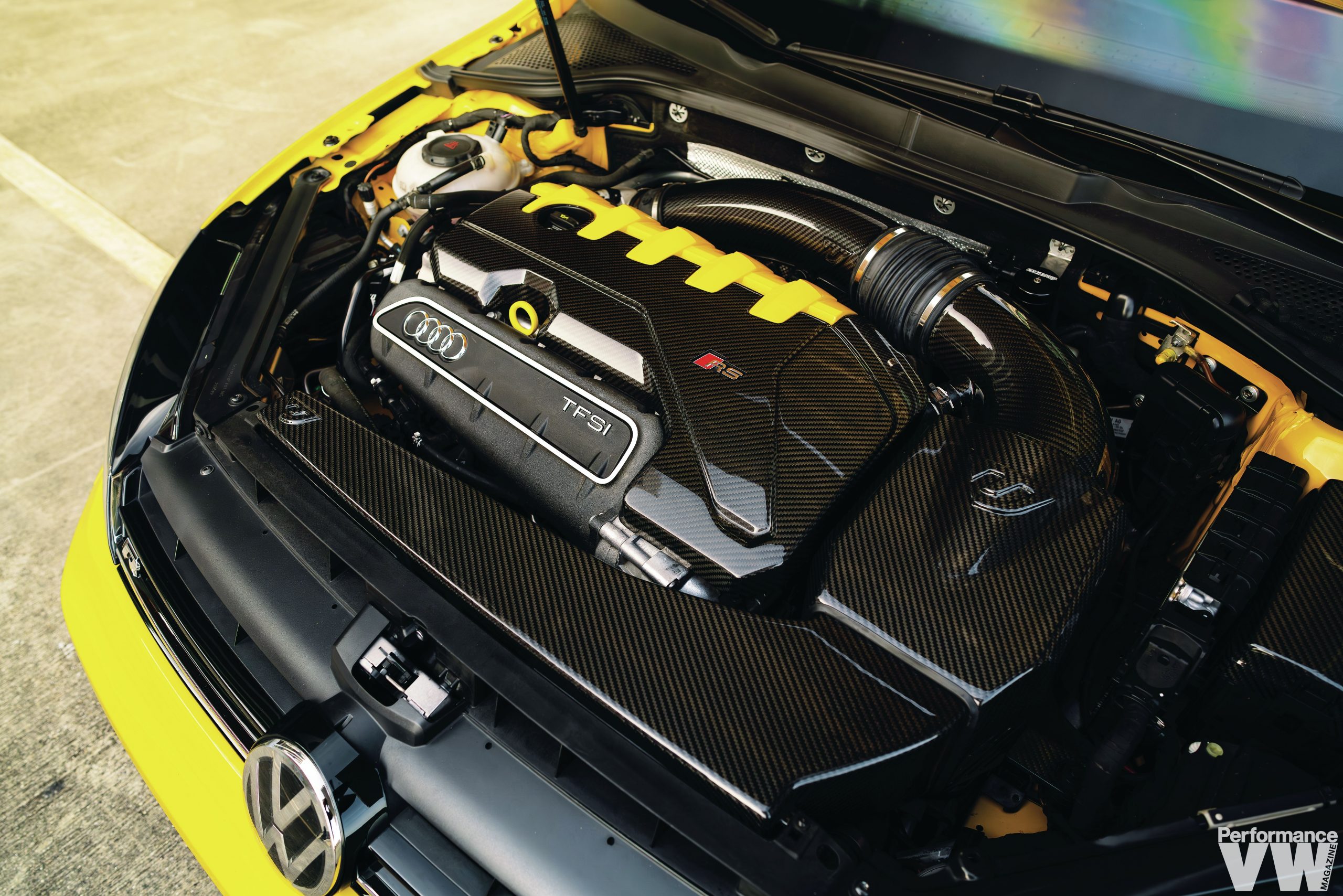
“I’m guessing I moved about 70 pins in the ECM connector, added wires for new fuses and relays,” he continued. “However, that’s the beauty of having the wrecked Audi: everything was available. I probably made seven splices under the hood, ran the RS3 battery cable to the trunk – one of only two permanent changes I made to the car, which also included cutting and splicing the fuel pump. Otherwise, it wasn’t overwhelming. You go slowly, wire by wire, and get it right. I made some mistakes, but I’d go back after every few pin changes and find them. In fact, the engine fired the first time we turned the key!”
It has been fascinating to follow the entire process on YouTube, learning as we go, getting advice on avoiding pitfalls and witnessing Charles’ concerns. Perhaps the biggest was the Bag Riders air suspension, which was subsequently swapped for the latest Koni GTS coilovers.
“I’ve hated every air-ride that didn’t come from the factory, but I was willing to think it could be good solution for the R,” Sanville rationalised. “And thanks to so much help from John at Ludwick’s Garage, we got a good set up with the Bag Riders kit. However, it just brought me too much anxiety. I kept thinking about all the potential failure points I’d added and felt it wasn’t right for the car. I was glad to experience the installation and enjoyed using it on the road, but I recently opted for newly developed Koni coilovers. They were shipped directly from Holland and I got the second set in the country. I’ve not really had a chance to test them since I had to get the car ready for the Koni stand at SEMA, but they feel great and I’m more relaxed driving it.”
So was it worth it? Again, Charles was forthright in his opinions: “It was a crap situation. If I could go back, I’d prefer it never happened. But since it did, I made the best job of recovering from a bad situation. The car is awesome. I love it. But I’d have been just as happy with RS3 seats in a standard Golf R,” he lamented. “On the positive side, I have a video series with two million views, had a car in SEMA, and people love to see it.


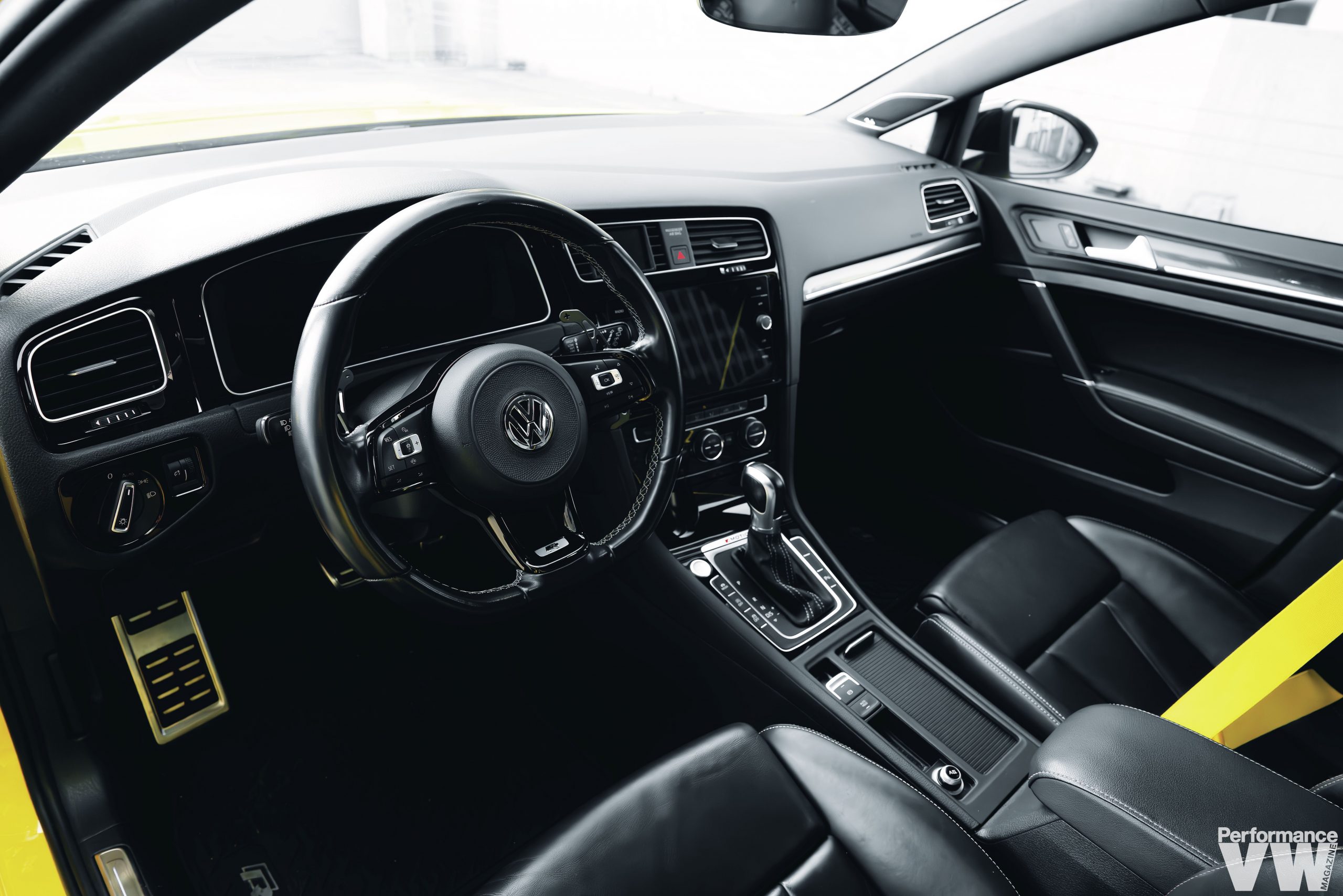
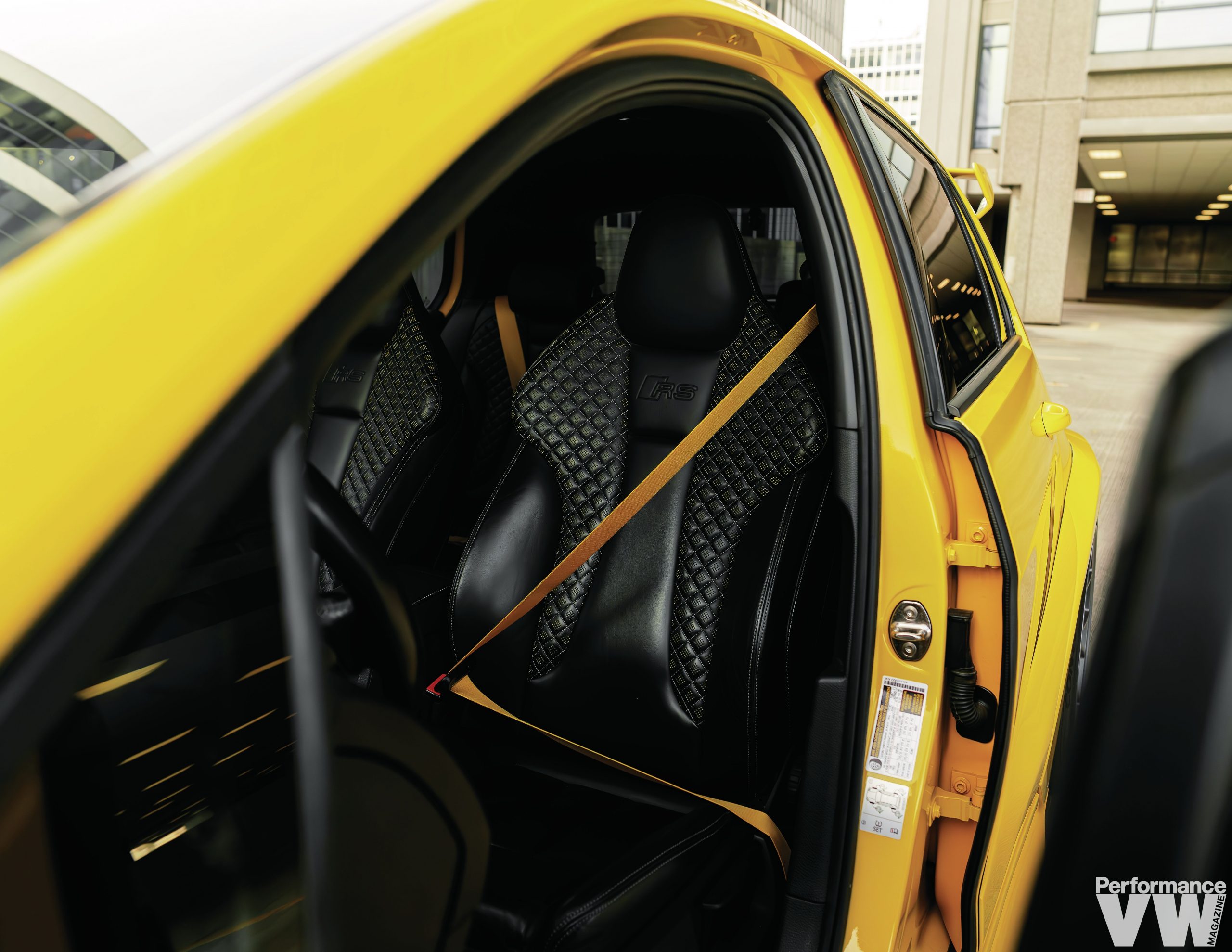

“It might seem contradictory,” he continued, “but my goal was to never stray too far OEM+. I wanted to build a cool car rather than something obnoxious. And while a 700hp widebody Golf R in yellow is obviously wild, I hope it still looks like it could’ve come that way.”
To further soften the blow of his initial misfortune, Chad calculated he was able to recoup a considerable amount of the £19k he spent on the RS3 by selling the unwanted parts. He’s also sold the Golf R engine, ’box and other parts. So, while the bodywork and kit accounted for the insurance pay out, he reckons everything else cost about $8k.
Asked if he’d ever contemplated putting his effort into the Audi, Charles retorted: “The RS3 is just a loud Jetta. It’s a cool car but I wanted a Golf R!”
If this hasn’t already convinced you to subscribe to @humblemechanic on YouTube, then perhaps his next projects will persuade you. Both are Mk4 R32s. One will receive an HPA turbo while the other will be supercharged. If you’ve ever considered approaching a similar project on a DIY basis, Charles will certainly explain the process and warn of any hazards. Anybody up for a PVW watch party? 
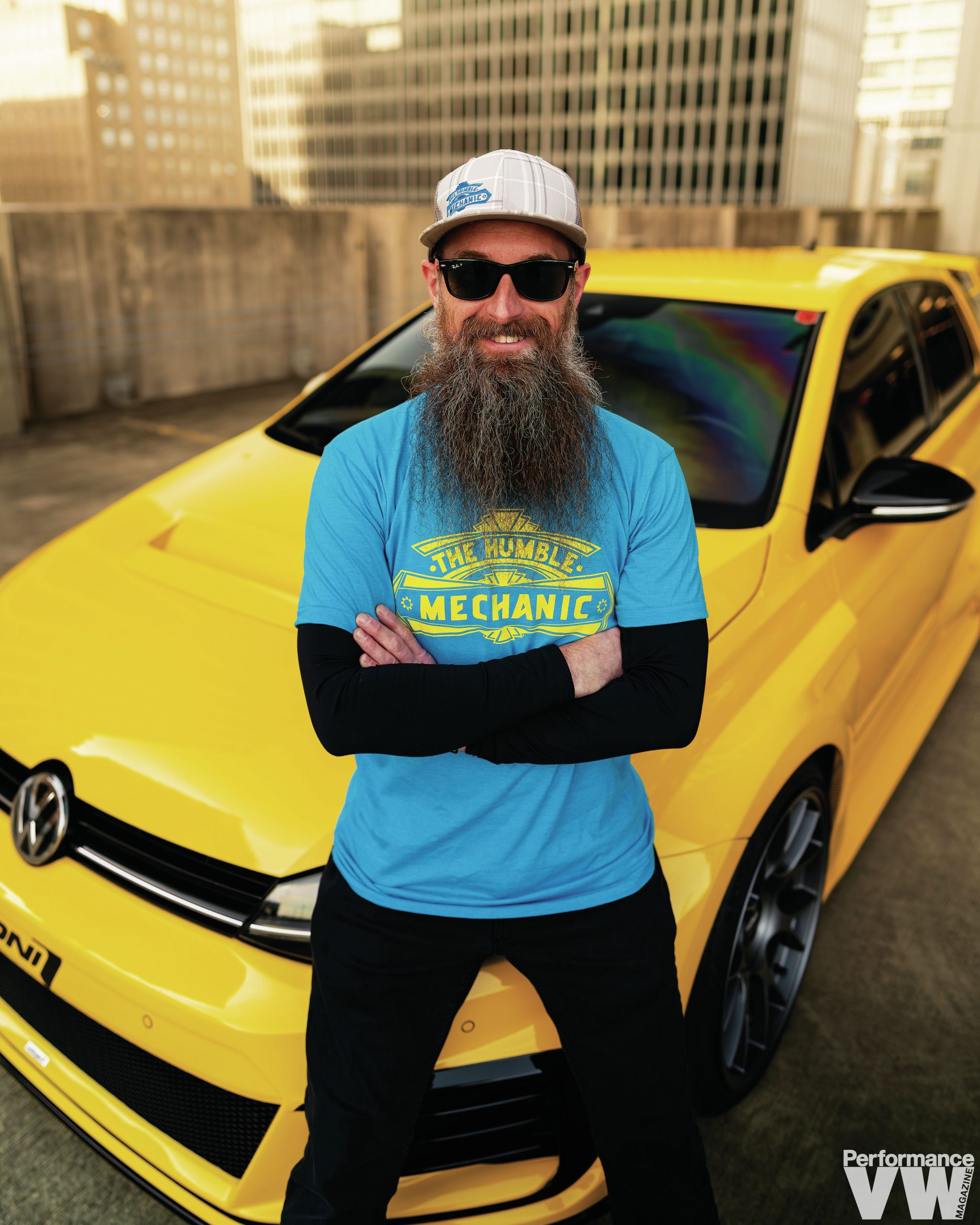
DUB DETAILS
|
ENGINE |
2.5-litre, five-cylinder Audi DAZA engine swap from RS3 with Unitronic Stage 2, UniFlex E85, 4” turbo inlet and intake, downpipe and mid-pipes, FMIC, MPI injector upgrade kit, Milltek custom cat-back exhaust, 034 Motorsport DSG catch can, Audi DQ500 dual-clutch DCT gearbox swap |
|
CHASSIS |
10.5×19” Rotiform Tuf wheels, 275/30 R19 Continental ExtremeContact Sport 2 tyres, Audi RS3 eight-pot front calipers with 376mm discs, single-piston RS3 rear calipers with 034 Motorsport two-piece 350mm rear discs and caliper bracket, steel braided lines, Koni GTS coilovers, 034 anti-roll bars and end-links |
|
EXTERIOR |
Limited edition Ginster Yellow over Oettinger TCR Street Design widebody kit including front bumper, replacement front wings, rear wheel arches, rear valance, side skirts, rear wing, bonnet vent. Repairs, installation and paint by Premier Autobody |
|
INTERIOR |
Audi RS3 front and rear seats, lowered RS3 gear shifter on GTD bracket |
|
SHOUTS |
Paul at Deutsche Auto Parts, Juan at Premier Autobody, videographer Ray, John at Ludwick’s Garage, 034Motorsport, Koni, Liqui Moly, Milltek, Oettinger, Rotiform, StitchCraft.NC, Unitronic and “the VW community for being the real MVP” |
